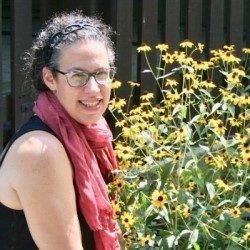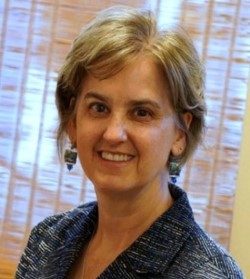CPT Profiles: Susan Kauzlarich and Barbara Reisner
CPT Member Profiles: Susan Kauzlarich and Barbara Reisner
by Sarah Derouin for the American Chemical Society
Chemistry departments around the country look to the American Chemical Society for guidelines and standards on how to train students to become excellent and well-rounded chemists. Since 1936, ACS has led an approval process for universities and colleges to certify chemistry graduates. Currently, there are approximately 700 approved institutions in the United States.
The Committee on Professional Training, or CPT, works with ACS to shape these guidelines and periodically reviews each chemistry department. CPT members are chemistry professionals from academia, research laboratories, and industry, who bring their expertise and experiences to the review process.
The guidelines are periodically updated to reflect emerging trends in chemical education. This includes everything from the inclusion of new disciplinary topics, skill-building, or addressing best practices during a global pandemic. Additionally, the committee also tackles diversity, equity, inclusion, and respect guidelines, as these topics are deeply intertwined with undergraduate education and professional development.
Excellence in Teaching and Mentoring
One big facet of chemistry is discovering new materials and understanding how these new materials interact with water, electricity, and living things. Inorganic chemists like professors Barbara Reisner, Ph.D. and Susan Kauzlarich, Ph.D. delve into the world of new compounds and what they can do for humanity.
“I am working on materials that convert a temperature gradient directly into electricity,” says Kauzlarich, a distinguished professor at University of California- Davis. She says her research group is also “very interested in discovery-science, making brand new compounds— compounds and compositions that have not been imagined before.”
Reisner, a professor at James Madison University, says she is rebuilding her wet chemistry research group, after getting sidelined during the COVID pandemic. “Our current research direction is looking at water-stable metal-organic frameworks that can be used to adsorb organic molecules,” she says. “This allows me to put an environmental spin on my research which is very attractive to my students.” She notes that from that research, she and her colleagues are also developing a project that will be used in the labs for undergraduates.
Thinking about how to teach chemistry has always been on Reisner’s mind. “I’ve always had an interest in teaching,” Reisner notes, adding that as a new professor she began developing ways to teach laboratories that would foster more student reflection.
When she was an associate professor, Reisner joined the Interactive Online Network of Inorganic Chemists (IONiC), a group of inorganic chemistry faculty and students who are committed to enhancing the classroom and laboratory experience for students. IONiC’s work is presented on the website VIPEr (Virtual Inorganic Pedagogical Electronic Resource), which acts as a repository for resources and a place inorganic chemists can collaborate and build community.
“I was one of the people who was on the ground floor of building VIPEr and building the community,” says Reisner. “I've been involved with that community, through developing the website, building the community, and then studying the community, which is one of my research directions right now.”
Kauzlarich is also involved in IONiC, and is a VIPEr Fellow. As a fellow, she will join a cohort of chemistry professors to develop, test, and refine a flexible foundation-level inorganic chemistry course. The work is intertwined with her commitment to equity in the sciences.
“Our training of our next generation scientists is very important,” says Kauzlarich. “I believe that you cannot do good science with only a portion of your population engaged.” Since starting at UC Davis 30 years ago, Kauzlarich has been involved with all outreach efforts for STEM. She is also very transparent about her life as a chemistry professional as well as her life outside of work.
“There are a lot of students who are first-generation college students and there's a lot of hurdles that they have to maneuver and understand to be successful,” Kauzlarich says. She explains that she frequently talks about being a mom to three kids and now a grandmother, and how she takes time to play tennis and have a life outside of the lab. Explaining how to prioritize and balance all of life’s demands has “been a priority for me.”
Her commitment to mentoring has been noticed. Among her many awards, Kauzlarich received the 2008 Presidential Award for Excellence in Science, Mathematics, and Engineering Mentoring and the UC Davis Chancellor’s Award for Excellence in Mentoring in 2017.
New approaches to chemistry education
Before becoming a CPT member, Reisner says that the committee’s work was a big part of her research into chemistry education. “I believe that CPT has influenced the position of inorganic chemistry in the curriculum and the inorganic course is something that’s very important to me,” she says.
Since joining CPT, Reisner notes that she’s been very involved with the guidelines and upcoming revisions. “I’m really excited to have been a part of the team that developed the COVID guidelines, and articulated the skills a student should get out of their lab curriculum,” she says, adding that she’s proud of the way CPT introduced flexibility for departments.
There are several CPT members who straddle chemistry and education, says Resiner. She notes that this gives CPT members a unique perspective on the chemistry field but also how to best present that in the classroom.
“We've been working on the guidelines for a very long time,” says Reisner. “I'm really excited about the revision that's coming out in 2023, and also differentiating between critical requirements, normal expectations, and markers of excellence.”
“I frame everything in terms of our process of continuous improvement,” Reisner explains. “How do we continuously get better? We're not going to get things right the first time, and then things evolve. How do we take the information we know and continually make it better?”
“We (CPT) have really tried to be innovative and open, understanding that every chemistry department doesn't have to teach chemistry the same way,” Kauzlarich says. “You can deliver instruction and can formulate classes for students in different ways to engage students while also delivering a rigorous curriculum.”
“As members of CPT, we're trying to think outside the box, be open to innovation, and highlight innovation in teaching or delivering the curriculum,” she says, adding that they are supportive of pilot programs that try new things, even if the outcomes aren’t yet clear. “Giving departments the opportunity to be innovative with data-supported teaching innovation is something CPT wants to engender into departments— we're looking forward.”
Kauzlarich says that she is particularly proud of the diversity, equity, inclusion, and respect work that CPT has tackled for the latest set of revisions. “It’s been especially timely and that has been very important.”
These guidelines are meant to be the start to open conversations between CPT university chemistry departments, not the end. Reisner hopes that chemistry departments feel empowered to communicate with CPT. “It’s meant to be a two-way conversation,” she notes.
Our training of our next generation scientists is very important,” says Kauzlarich. “I believe that you cannot do good science with only a portion of your population engaged.



